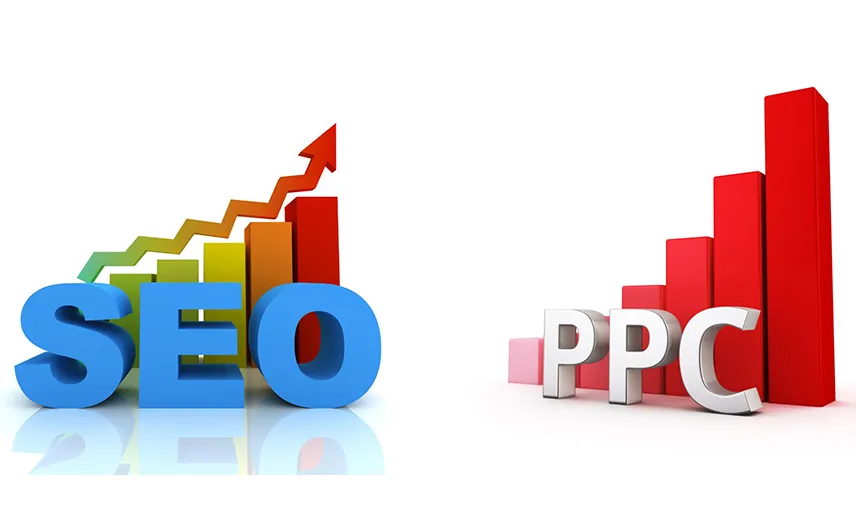-
Find Services
-
Generative AI
-
Blockchain Technology
-
Mobile App Development
-
Software Development
-
Web Development
-
E-Commerce Development
-
App Designing (UI/UX)
-
Web Designing (UI/UX)
-
IoT Development
- Industry
- Manufacturing
- Health Care
- Logistics
- Automotive
- Testing Services
- DevOps
- Game Development
- Robotic Process Automation
- AR & VR Development
- Browse All Services
-
Generative AI
-
Find Agencies
- Submit Reviews
- Research & Surveys

With the advent of the digital age, businesses are generating and collecting large volumes of data from many sources. Such amounts of data, therefore, are becoming too big and complex to deal with the traditional data-processing methods. However, when used successfully through Business Intelligence and Data Analytics, this data has become a source of informed and actionable decisions that have changed business operations. Companies are increasingly using BI to transform raw data into actionable insights, which converts decision-making into data-driven, process optimization, better customer experience, and keeping in a state of competition. In this blog, we will cover how Big Data and Business Intelligence reshape the ways of running a business in the modern world.
What is Big Data?
Big Data refers to very huge sizes of data wherein the traditional systems cannot process adequately. It features three main attributes:
Volume: The number of data in a given second, such as social network interactions, sensor data, and transaction logs.
Variety: The type of data formats-including structured data (such as a database), semi-structured data (such as an XML file), and unstructured data (such as a video or social media post).
Velocity: The amount at which data is being generated and needs to be processed for its relevance.
These characters, therefore, require new ways of storing, processing, as well as analyzing data in order to furnish meaningful insight, which may subsequently go on to shape business strategies.
What is Business Intelligence?
Business Intelligence (BI) is a process related to collecting, managing, and analyzing voluminous amounts of data with the motive to make better decisions. It utilizes tools such as Tableau, Power BI, QlikView, and so on to present visual data to their managers and stakeholders about KPIs, reporting, and so on. The idea is to transform raw data into meaningful information that is accessible and understandable for data-driven decision-making at all different layers of any organization.
The Role of Data Analytics
Data Analytics is the science of scrutiny of raw data to draw conclusions and make informed decisions. Included in the techniques are:
Descriptive Analytics: Extraction of historical data on what happened in the past.
Diagnostic Analytics: Determination of root causes behind past performances and identification of influencing factors to results.
Predictive Analytics: A method for forecasting future trends and behaviour by applying statistical models and machine learning.
Prescriptive Analytics: Suggesting the proper action to be taken based on analyzed data to obtain the desired results.
This in turn enables businesses to convert big data into actionable insights that influence direct strategic decision-making. For instance, by using predictive analytics, retail businesses will know in advance what the actual demand is from their customers, thus optimizing inventory and avoiding stockouts.
The Intersection of Big Data and Business Intelligence
The convergence of Big Data and Business Intelligence has created a powerful synergy, empowering organizations to harness the full potential of their data. Here are some key ways this intersection drives business decisions:
1. Real-Time Insights for Quick Decision-Making
Big Data allows organizations to analyze data in real time, providing insights that can shape immediate day-to-day decisions. This is enabled by the BI tools, which provide dashboards and visualization so decision-makers can monitor key metrics and act quickly on changes happening within the market. This ability especially comes in handy for industries such as finance where the use of real-time data can make it signal market trends or potential fraudulent activity that needs to be addressed.
2. Improving Customers’ Experience
Firm-wide analysis of customer data from multiple touch points such as social media, purchase history, helps a firm arrive at an in-depth understanding of customer behavior, thus enabling them to personalize their experiences, enhance customer service, and design targeted marketing campaigns based on individual preferences. For instance, e-commerce sites make use of customer data to propose products that customers may also like, and hence sales are increased and so does the satisfaction of the customer.
3. Operational Efficiency Improvement
Data-driven decisions help companies detect areas of inefficiency in their processes and optimize them for better performance. For instance, with predictive analytics, manufacturers can anticipate the failure of equipment before costly breakdowns and schedule maintenance for them. This way, downtime is kept at a minimum, while equipment life is stretched even further.
4. Supporting Strategic Planning
Business Intelligence equips organizations with a kind of ability to conduct past analysis, detect trends, and predict the future. This information is critical in strategic planning as businesses can determine any kind of change taking place within the market, allocate resources in the best possible way, and spend on opportunities that are ripe for yielding higher returns. Companies can conduct a competitive analysis to further benchmark themselves against competitors while detecting areas that need improvement or growth.
The Importance of Data-Driven Decisions
Making decisions based on data is no longer a luxury but rather a necessity in most modern organizations. Among the benefits of using data to make decisions are the following:
1. Objectivity
Using data replaces reliance on feelings or intuition and provides more objective guidance in making a choice. This gives an organization an avenue through which they can minimize biases and make choices based on facts.
2. Predictive Capabilities
Leveraging data analytics helps business organizations predict changes in customer behavior, market trends, or even the trajectory of the industry. This gives companies an inspiration for change and the ability to remain ahead in the business line.
3. Cost Optimization
Due to the knowledge of data trends, companies can process activities more effectively with no wastage and prevent inefficiencies. For example, logistics companies could use data analytics to optimize delivery routes to save costs in terms of fuel and time.
4. Sophisticated Risk Management
Predictive analytics will identify risks even before they come to fruition, enabling companies to take steps to prevent them. In areas such as finance and healthcare, this is the difference between success and failure.
The Role of BI Tools in Driving Data-Driven Decisions
BI tools transform complicated data into clear and actionable insights. Some features they bring are dashboards and Visualizations, which present data in an understandable format that allows the user to grasp insights quickly.
Real-Time Analysis: Gives up-to-the-minute information that serves any business which needs to act swiftly
Data Integration: The integration of data into its points of origin from differing sources, i.e., databases, and spreadsheets to a single platform for comprehensive analysis.
With rapid technological innovations, modern BI tools now introduce AI and ML functionality that facilitates advanced predictive and prescriptive analytics. These smart-systems detect patterns automatically, make recommendations, and more accurately predict future results.
Challenges and Considerations
The benefits of Big Data and BI are immense but pose the following challenges to companies in the effective harnessing of these technologies:
Data Quality: When data contains errors or omissions, the conclusions drawn from it are incorrect. Data quality is an important step in data analysis.
Security and Privacy: When processing large datasets with personal information, protection protocols regarding data must be kept up to regulatory standards.
Skills Gap: The pace at which data technologies are advancing has resulted in a skills gap. Companies must expand their pool of data analysts, data scientists, and BI specialists which will allow companies to squeeze the most value out of their data initiatives.
The Future of Big Data and Business Intelligence
The transformation pace in Big Data and Business Intelligence gained momentum owing to advancements in cloud computing, AI, and ML. The future trends to watch in big data and business intelligence are as represented below:
AI-Powered BI Tools: AI is increasingly being utilized for data analysis automation, which would eventually bring about predictions and unbiased insights with human intervention significantly reduced.
Edge Computing: Data would be analyzed on the edge in real-time by analyzing it closer to its source, as seen in IoT devices, thus reducing latency.
Data Democratization: Organizations will grant access to data to everyone. This would lead to a global culture of decision-making at every level.
Conclusion
Modern business strategy is not possible without Big Data and Business Intelligence, as these provide organizations with fact-based reasoning for making informed decisions that can lead to better performance and a competitive position. Further BI tools and Data Analytics developments will increasingly enable businesses to access future trends within their business data. More opportunities will be there for companies to better capitalize on the opportunities and confront the changing landscape in the market.
Latest Posts
Categories
Tags
Submit Your Inquiry
Related Posts

Top 10 Web Design Mistakes to Avoid for a Better User Experience
When it comes to building a website, the design can make or break its success. Even small web design errors can lead to poor user experience, high bounce rates, and lost business opportunities. So, whether you’re working on a personal project or developing a website for your business, it's crucial to avoid common mistakes that can negatively impact your site’s usability and performance. In this blog, we’ll explore the top 10 web design mistakes to avoid to ensure your website delivers the best possible experience for your visitors. 1. Slow Loading Speed Among the most common web design errors, slow loading time is a prominent one. Websites that take a long time to load frustrate users and often make them leave before even looking at the content. Google reports that 53% of mobile users abandon a site if it takes longer than 3 seconds to load. Avoid this by optimizing your website images, eliminating unused plugins, and perhaps using a content delivery network (CDN) to make your site faster. A faster website generally leads to better user experience and rankings in search engines. 2. Poor Mobile Responsiveness In today's world, most people browse the web on their smartphone or tablet rather than on desktop computers. A website that is not mobile friendly alienates a huge portion of your audience. This may very well be a huge mistake as your visitors will leave your website if they have to zoom or scroll horizontally to find content on your website. Responsive web design solves this problem. It will make the site adapt directly to multiple screen sizes to ensure better user experience on different devices. 3. Difficult Navigation Navigation is a key to a great user experience. If users are unable to find what they are looking for quickly, they may leave your site. Complicated menus, unclear labels, or too many options can confuse visitors. Your website should have a simple and intuitive navigation structure. Use clear and concise labels for menu items, and ensure that the most important pages are easy to access. A simple navigation system will lead to better engagement and enables users to find information faster. 4. Cluttered Interface A cluttered, overcrowded website will overwhelm the visitor and distract them from important information. Clear and simple web design should be at the forefront of every web design. Do not pack too many elements onto a page. Create a clean layout with enough white space to improve user experience. Use hierarchy effectively by contrasting colors and size to highlight the most important elements, such as calls-to-action (CTAs), so that visitors understand what to do next. 5. Unclear Call to Action (CTA) Calls-to-action are very critical to take users through in terms of making them purchase, signing up for the newsletter, or contacting them. Lack of or poorly worded CTA makes it among the worst website design mistakes. Make sure your CTAs stand out, are direct and intuitive. Use words in active voice like "Buy Now," "Get Started" or "Subscribe Today". Position CTAs on areas where they will easily view without cluttering up a page. 6. Not Prioritizing Accessibility Another major mistake in web design is not considering accessibility for people with disabilities. Websites that aren’t accessible to everyone can alienate a large audience and even result in legal issues. Follow web accessibility guidelines (WCAG) to ensure your website is usable for people with visual, auditory, and motor impairments. This includes things like adding alt text to images, ensuring good contrast for readability, and making sure your site works well with screen readers. 7. Using Too Many Fonts Fonts can help set the tone of your website, but using too many types will just give it a disjointed, chaotic look. Combining fonts can simply be distracting and make it harder for users to read your content. Use no more than two or three fonts. Select one for headings and another for body text, and ensure that they complement each other. A consistent font scheme makes your site look more professional and improves readability. 8. Ignoring SEO SEO is also something that is often left out of web design. But in reality, this is what drives traffic to your site. If your site is not optimized for search engines, it won't be found in the search results. Thus, potential visitors will never find it. Ensure that your website design is SEO-friendly with proper HTML tags, images optimized for faster loading, and keyword inclusion. Mobile optimization and clean, readable URLs also enhance better search engine rankings. 9. Overcomplicating Design with Flash Flash was once a thing in websites, but this is some of the many reasons not to use it anymore: it decreases your website's performance and its non-support by all devices from mobile phones on. There isn't much usability for those using the web today. Do not use Flash, but apply more to HTML5, CSS3, and JavaScript elements of interaction. These allow more seamless performance, faster loads, and greater compatibility than flash technology. 10. Lack of Consistent Branding Your website should be an expression of your brand identity, meaning it should use consistent colors, fonts, and imagery aligned with your brand. Inconsistent branding confuses visitors and hurts your credibility. Keep it consistent. Make a style guide on your website to keep the most essential elements in harmony as it would with the branding voice and aesthetic. Consistency also makes trust and recognition for your brand happen. Conclusion Building a website is more than just a technical process. It’s about creating a seamless and enjoyable experience for your visitors. By avoiding common web design mistakes like slow loading speeds, poor navigation, and unclear CTAs, you can ensure that your website is user-friendly, accessible, and effective. Remember, web design isn’t just about aesthetics—it’s about functionality and user experience. So, focus on simplicity, clarity, and usability, and your website will thrive. By staying clear of these web design errors, you’ll not only enhance user experience but also improve your chances of success online. If you want to avoid these pitfalls, partnering with a professional web design agency can help you create a website that meets the highest standards of design and functionality.







